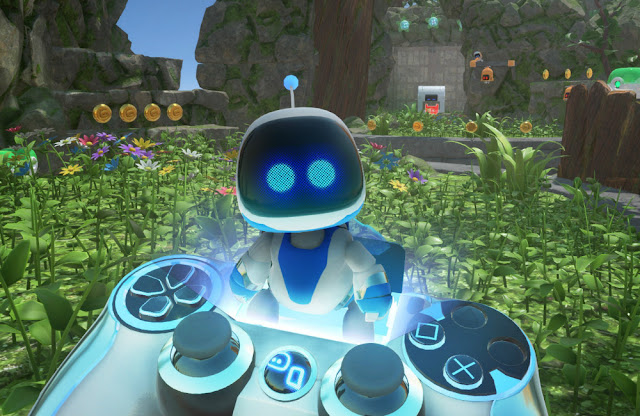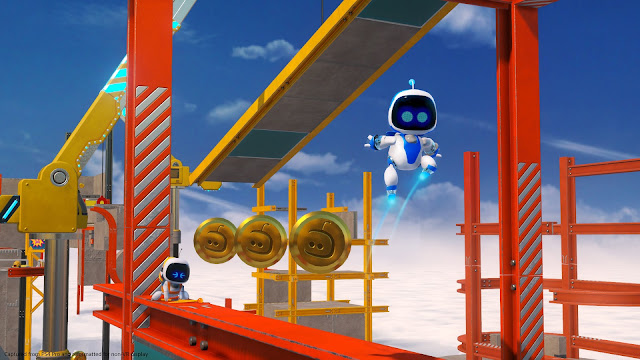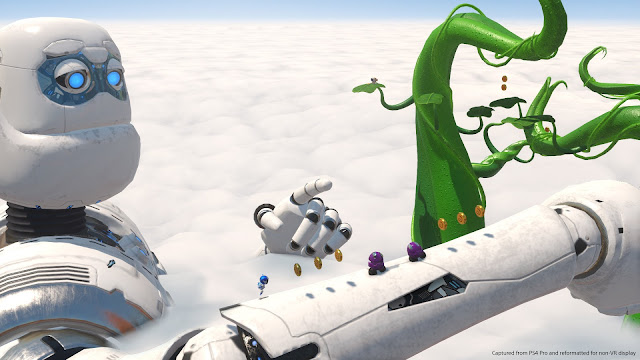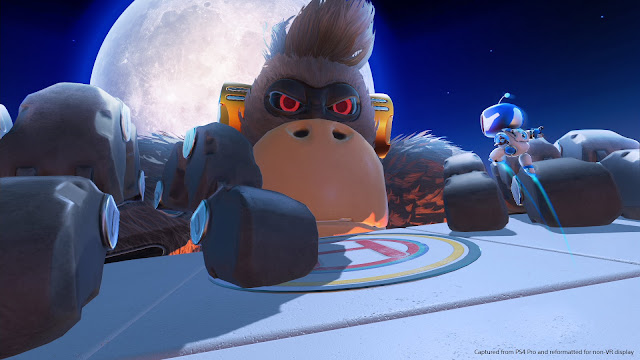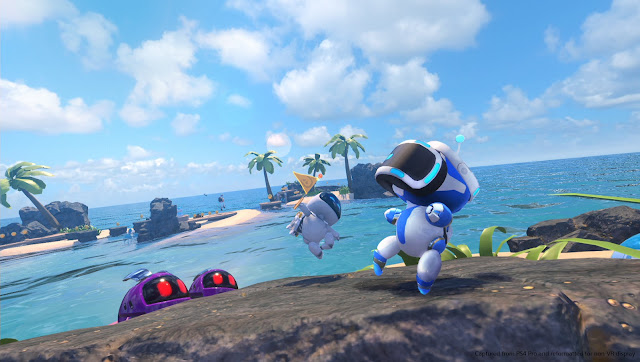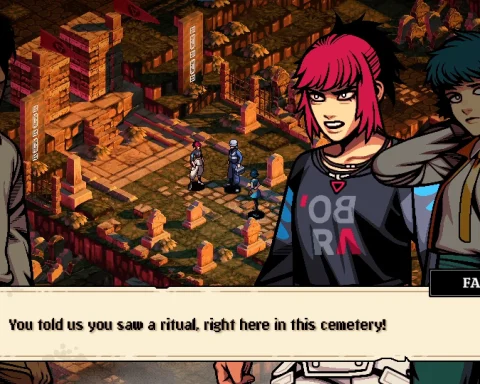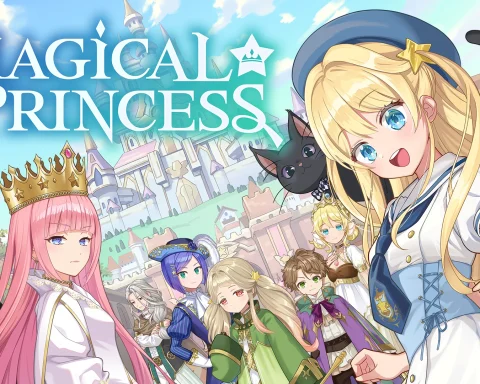Review by Matt C.
Great though all the minigames in Playroom VR were, there was one that always stood out above the rest: Robot Rescue. Rejecting the assumption that VR games need to be first-person for the sake of immersion, Robot Rescue offered up a brilliant third-person platformer experience, with virtual reality adding a unique element of perspective to the jumping puzzles.
Astro Bot: Rescue Mission is that same concept, fleshed out into a fully-fledged game; the result is one the best uses of VR to date. It’s also, hands down, one of the most intrinsically enjoyable games I’ve played in a long time, with a sense of childlike wonder pervading every level and plenty of charming little details for the observant.
The game opens with an alien attacking an adorable sentient spaceship, scattering its many robot residents across the galaxy. The only bot left is the captain, Astro, who sets out to rescue the rest of the crew, with you as a sort of guide.
I say “guide” because although you control Astro directly, you don’t become the little robot in the way that you usually would in a platformer. Rather, you’re positioned as another, unnamed entity, who follows Astro and helps indirect ways as well. In a sense, the third-person camera becomes another character, which is who you embody. (It’s a very similar setup to Moss, if you’ve played that.)
This opens the door to some very clever twists on the classic 3D platformer framework. By moving your head, you change the perspective in a way that a traditional over-the-shoulder camera would struggle with. Many a secret is hidden in a way that requires you to peer around corners, look up into the sky, and sometimes take your eyes off Astro entirely.
You also assist more directly with gadgets loaded into your controller (or at least, in the in-game manifestation of your controller). A hook shot lets you pull down certain obstacles and create a tightrope for Astro to walk across; a water gun lets you grow plants that serve as platforms and fill pools for Astro to swim in; when thrown, shuriken can cut ropes and form ledges when they stick into walls.
In a similar vein, some enemies will attack you rather than Astro. Some shoot balls of goo that stick to your face and block your field of view for a few moments, while others will throw rocks and the like that can break your “screen” and distort your perception. Perhaps my favourite are soccer robots who keep kicking a ball at your face, which you then have to headbutt back, creating a little game of VR ping pong until the ball picks up enough speed to knock out the robot and let you and Astro past.
Nifty as the tweaks to platforming are, the most impressive thing—for me, at least—is just the sense of scale that comes with it. Levels extend all around you, and as such, you’re not stuck hovering above Astro’s head like a typical third-person camera. Oftentimes, a section of a level sees Astro running across a platform above your head, or dropping down into a chasm around where your feet would be. One particularly delightful level takes the little robot on an obstacle-laden roller coaster ride, with the track weaving all around you, and a handful of underwater levels really let you get the full 360 degree effect.
Boss fights take this to another level, with the VR perspective used to really make the enemies seem gargantuan. As a jaded old man who’s been playing games for most of my life, it’s not often that I get genuinely awestruck, but almost getting eaten by a giant shark or trying to break the teeth of an ape that’d make King Kong look small have a way of doing that.
(On that note, it’s worth mentioning that Astro Bot does require some mobility on the part of the player. It’s designed to be played seated, and it’s not going to be strenuous for most people, but expect to be moving your head and upper body reasonably often.)
The levels themselves are absolutely stunning. Each one sticks closely to a particular theme, from high-rise construction site to haunted graveyard to feudal Japanese city, with plenty of little details to bring them all to life. In some jungle levels, there are robotic plants that watch you closely and mimic your every head movement, and dangling vines and branches that snap as you push through them. Vultures circle overhead in a desert mountain level, and the aforementioned Japan level has plenty of lanterns, bamboo groves, and Mount Fuji in the background.
Sometimes, Astro Bot takes that focus on detail in a much more macabre direction In most levels, you’ll see bot-shaped skeletons lying around (why robots have skeletons, I’m not sure). That gets even more bleak when you realise that 399 bots go missing at the start of the game, but only 212 remain to be found and rescued. I never expected such a kid-friendly game to get so dark, but there you go.
As well as the usual array of collectibles and optional challenges, Astro Bot also offers you a play room where you can just hang out with your rescued robot buddies, with various different themed play sets that you can use to change the decor and toys scattered about. As you play the main game, you collect coins, which you can then spend to play a UFO catcher game (which, thankfully, isn’t rigged like the real-life counterparts often are). The prizes are little dioramas based on the different levels throughout the game, and each one you collect adds something new to the matching themed play set. Aside from collecting all the toys, there isn’t any specific goal in the play room; it’s just a place to hang out and relax.
Though the play room is where it’s at its most pure, that sense of playfulness runs through the entirety of Astro Bot: Rescue Mission, from its creative level design and innovative use of VR to its cute characters, awe-inspiring environments, and subtle dose of black humour. Pure, joyful escapism doesn’t get much better than this.
– Matt C.
Contributor
Find me on Twitter: @MC_Odd
Visit my blog: Shindig

